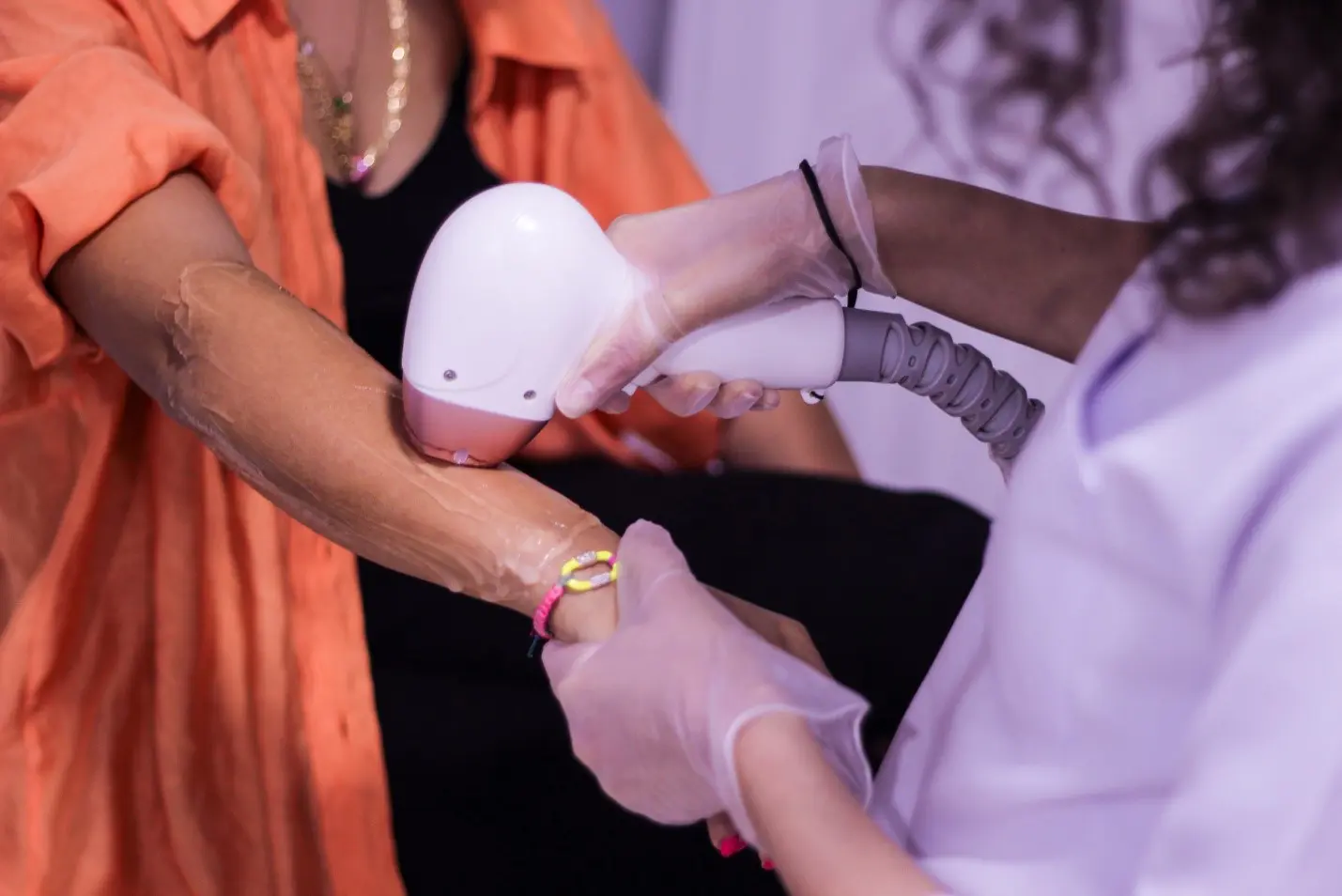
Laser hair removal: Are you tired of shaving or waxing unwanted hair only for it to grow back a few days later? If you're looking for a more permanent hair removal solution, you may have come across solutions such as laser hair removal and electrolysis. While both methods aim to get rid of unwanted hair, they work differently and have their own benefits and limitations.
Read on to explore the differences between laser hair removal and electrolysis and help you determine which method is best suited for your individual needs. Whether you're looking for a quick and efficient solution or a more permanent hair removal option, we've got you covered.
Laser Hair Removal
This cosmetic procedure uses a concentrated beam of light to remove unwanted hair from different parts of the body. The laser emits a wavelength of light that is absorbed by a type of pigment known as melanin in the hair follicle, which damages the follicle and inhibits its ability to grow hair. The procedure can be used to remove hair from areas such as the legs, underarms, bikini line, face, back, and chest.
Laser hair removal requires several treatments to achieve desired results. This is because hair grows in cycles, and all hair follicles are not active at the same time. The number of treatments needed depends on the individual's skin type, hair color, and the size of the treatment area. The procedure is generally safe and effective, but there can be some side effects, such as redness, swelling, and skin irritation, which usually subside within a few hours to a few days.
Electrolysis
This hair removal method uses an electric current to damage the hair follicle, which prevents future hair growth.
During electrolysis, a small probe is inserted into each hair follicle individually. An electric current is then applied through the probe to the hair follicle, which damages it and inhibits hair growth. The hair is then removed with tweezers. The process is repeated for each hair follicle in the treatment area.
There are three types of electrolysis: galvanic, thermolysis, and blend. Galvanic electrolysis uses a direct current to produce a chemical reaction in the hair follicle, while thermolysis uses a high-frequency alternating current to generate heat and damage the hair follicle. Blend electrolysis combines both galvanic and thermolysis methods for more effective hair removal.
Similar to laser hair removal, electrolysis requires multiple sessions to permanently remove all the hair. Electrolysis can cause some side effects, such as redness, swelling, and scarring, but these are rare when the procedure is performed by a trained professional.
Which Permanent Hair Removal Method is Better?
The main difference between laser hair removal and electrolysis is the way they target and damage the hair follicles. Both laser hair removal and electrolysis are effective methods of hair removal, but it is essential to learn about the difference between the two permanent hair removal methods to make an informed decision about which one is better for your individual needs
Laser Hair Removal Advantages
Laser hair removal can be a better option than electrolysis in several ways:
Larger Treatment Areas
Laser hair removal can treat larger areas of the body at once, such as the legs, back, and chest, whereas electrolysis is better suited for smaller areas like the upper lip or eyebrows.
Quicker Sessions
Laser hair removal is generally quicker than electrolysis as it can treat multiple hair follicles at once. A single session of laser hair removal can take anywhere between a few minutes to an hour, while electrolysis may require more time to treat each individual hair follicle.
Less Discomfort
Laser hair removal can be less uncomfortable than electrolysis, as the laser emits a cooling sensation that soothes the skin during treatment. Electrolysis can be more uncomfortable as it involves the insertion of a probe into each individual hair follicle.
Fewer Sessions Required
In general, laser hair removal requires fewer sessions than electrolysis to achieve desired results. While the number of sessions depends on individual factors, such as hair type and skin type, laser hair removal can usually provide results in 6-8 sessions, whereas electrolysis may require more sessions.
More Effective On Certain Hair Types
Laser hair removal can be more effective on coarse, thick hair, whereas electrolysis is better suited for fine hair. This is because laser hair removal targets the pigment in the hair, which is more abundant in coarse hair.
Advantages of Electrolysis
There are several ways in which electrolysis is a better option for permanent hair removal.
More Permanent Results
Electrolysis is considered a more permanent hair removal solution than laser hair removal. With electrolysis, each hair follicle is treated individually, making it more effective in preventing future hair growth. Laser hair removal can only temporarily reduce hair growth, and maintenance sessions may be required to maintain the results.
Suitable For All Skin And Hair Types
Electrolysis can be used on all skin types and hair colors, whereas laser hair removal is more effective on light skin with dark hair. Electrolysis is a better option for people with darker skin tones or blonde, gray, or red hair that may not respond well to laser hair removal.
No Risk of Skin Damage
Electrolysis is a non-invasive hair removal method that does not cause any skin damage. Laser hair removal, on the other hand, can cause skin damage if not performed by a trained professional or if the wrong type of laser is used.
More Precise
Electrolysis is a more precise hair removal method as it targets each hair follicle individually. This makes it a better option for smaller areas, such as the eyebrows or upper lip.
Final Words
It's important to note that both laser hair removal and electrolysis have their own benefits and limitations, and the choice between the two depends on individual factors such as hair type, skin type, and treatment goals. A consultation with a licensed professional can help determine which method is best suited for each individual.

Recent Comments